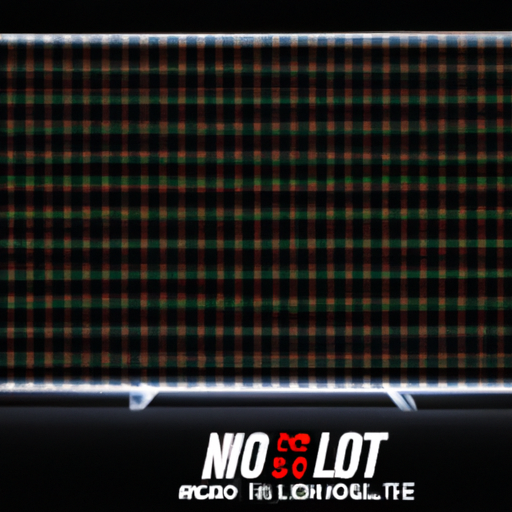Unveiling the Secrets Behind 10000 Nits Outdoor LED Display Manufacture
What is a 10000 Nits Outdoor LED Display?
A 10000 nits outdoor LED display is a modern marvel in digital signage technology, offering stunning brightness and sharp visibility even under direct sunlight. These displays are essential for businesses, governments, and events looking to capture attention in outdoor environments. But what exactly goes into manufacturing such high-brightness displays?
The Science Behind 10000 Nits Brightness
Understanding Nits
Nits, a unit of luminance, measure the brightness of a display. 10000 nits means the display emits a brightness of 10000 candela per square meter. This is significant in ensuring the content is visible even in the brightest outdoor conditions.
High Brightness, High Demand
The demand for high-brightness displays is driven by the need for clear visibility in outdoor settings. Whether for advertising, public information systems, or sporting events, visibility is crucial.
The Manufacturing Process of 10000 Nits Outdoor LED Displays
Designing the Display
- Technical Specifications: Initial design considerations include the pixel pitch, resolution, refresh rate, and power consumption.
- Material Selection: High-quality LEDs, driver ICs, and heat-dissipating materials are chosen for optimal performance.
Fabrication and Assembly
- LED Chip Production: Manufacturing begins with creating the LED chips, which involve epitaxy, chip bonding, and encapsulation processes.
- Module Assembly: LED chips are assembled into modules. These modules are the building blocks of the LED display.
- Testing and Calibration: Each module undergoes rigorous testing for brightness, color uniformity, and heat dissipation.
Ensuring Durability
- Weatherproofing: Displays are weatherproofed to withstand rain, dust, and temperature variations.
- UV Resistance: Special coatings are applied to prevent UV damage.
- Structural Integrity: The frame and casing are reinforced to endure outdoor environmental stress.
Case Study: Analyzing a Successful 10000 Nits Outdoor LED Display Installation
Background
In 2022, a leading sports venue adopted a 10000 nits outdoor LED display to enhance the fan experience. This case study explores the implementation process, challenges, and the resulting benefits.
Implementation Process
- Site Assessment: Engineers conducted a thorough site assessment to determine the optimal display size, location, and orientation.
- Custom Design: A custom solution was designed to fit the specific requirements of the venue.
- Installation: The display was installed with precision, ensuring stability and optimal viewing angles.
Results
- Increased Visibility: Spectators enjoyed unparalleled visibility, even during sunny daytime events.
- Enhanced Engagement: Interactive features and vibrant displays significantly boosted audience engagement.
- Revenue Growth: Sponsorship and advertising revenue saw a noticeable increase, thanks to the high visibility of the ads.
Key Components in 10000 Nits Outdoor LED Display Manufacture
Advanced LED Chips
High-quality LED chips are crucial for achieving the desired brightness. These chips are often made from gallium nitride (GaN) and indium gallium nitride (InGaN).
Driver ICs
Driver ICs control the flow of electricity to the LEDs. High-performance driver ICs ensure consistent brightness and color reproduction.
Optical Lenses
Optical lenses are used to enhance light output and ensure a uniform distribution of brightness across the display surface.
Heat Management Systems
Effective heat management is crucial to maintaining performance and longevity. Heat sinks, cooling fans, and thermal interface materials are commonly used.
Challenges in Manufacturing 10000 Nits Outdoor LED Displays
Heat Dissipation
High brightness levels generate significant heat, which can affect performance and lifespan. Advanced cooling solutions are required to manage this heat.
Power Consumption
Higher brightness demands more power. Efficient power management solutions are essential to keep energy costs manageable.
Color Consistency
Maintaining color consistency across the entire display can be challenging. Rigorous calibration and high-quality components are necessary to ensure uniformity.
Cost
The advanced technology and high-quality materials required for these displays can drive up manufacturing costs. However, the benefits often outweigh the initial investment.
Future Trends in Outdoor LED Display Technology
Smart Features
Future outdoor LED displays are expected to integrate smart features such as real-time data analytics, interactive capabilities, and IoT compatibility.
Environmentally Friendly Solutions
With increasing awareness of environmental impact, manufacturers are focusing on developing energy-efficient and eco-friendly displays.
Enhanced Durability
Advancements in materials and coatings will continue to improve the durability and lifespan of outdoor LED displays.
Conclusion
The manufacturing of 10000 nits outdoor LED displays is a complex process that combines advanced technology, high-quality materials, and meticulous craftsmanship. As the demand for high-brightness outdoor displays continues to grow, manufacturers are continually innovating to meet and exceed market expectations. Whether for advertising, public information, or entertainment, these displays offer unparalleled visibility and engagement in any outdoor setting.

